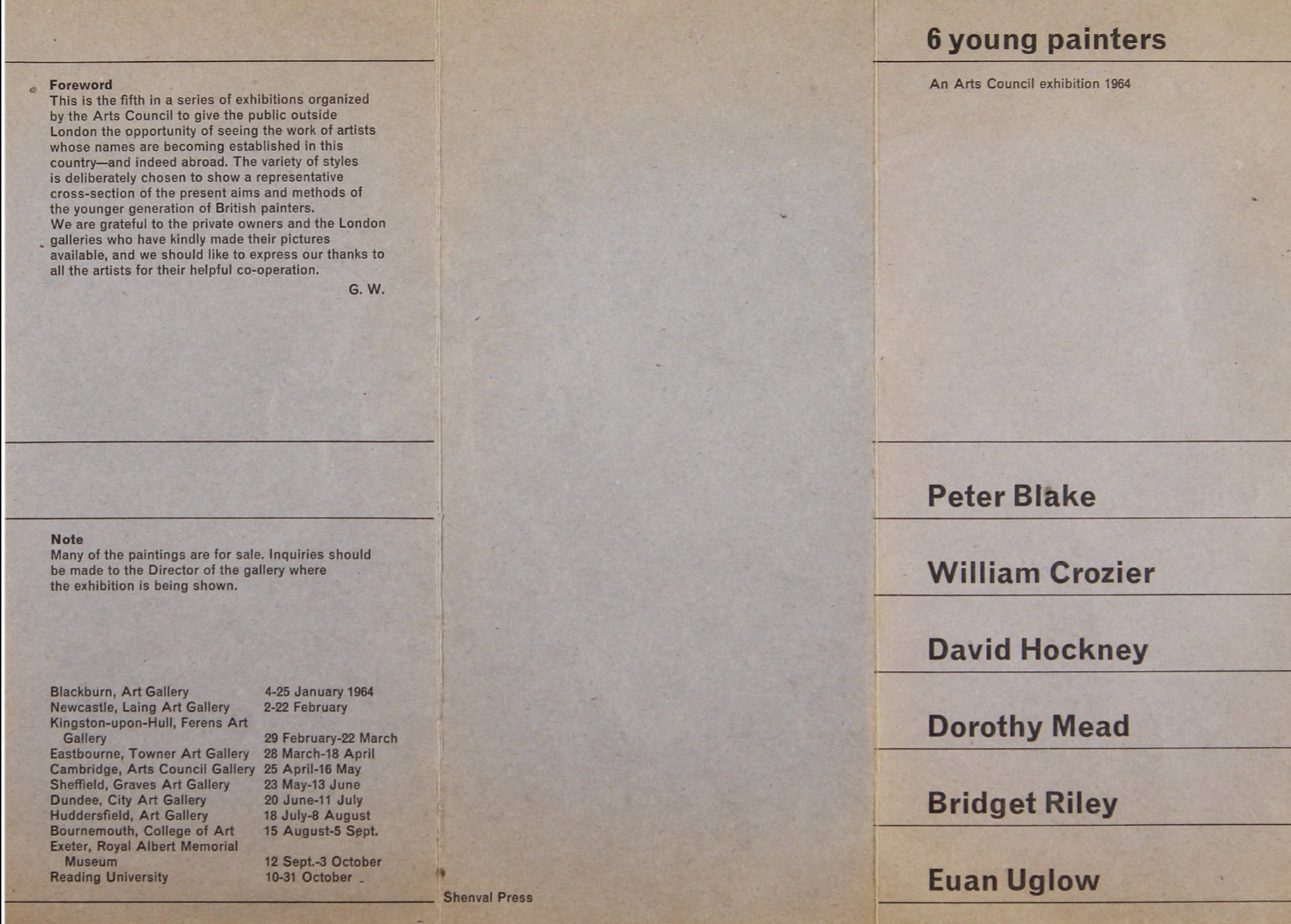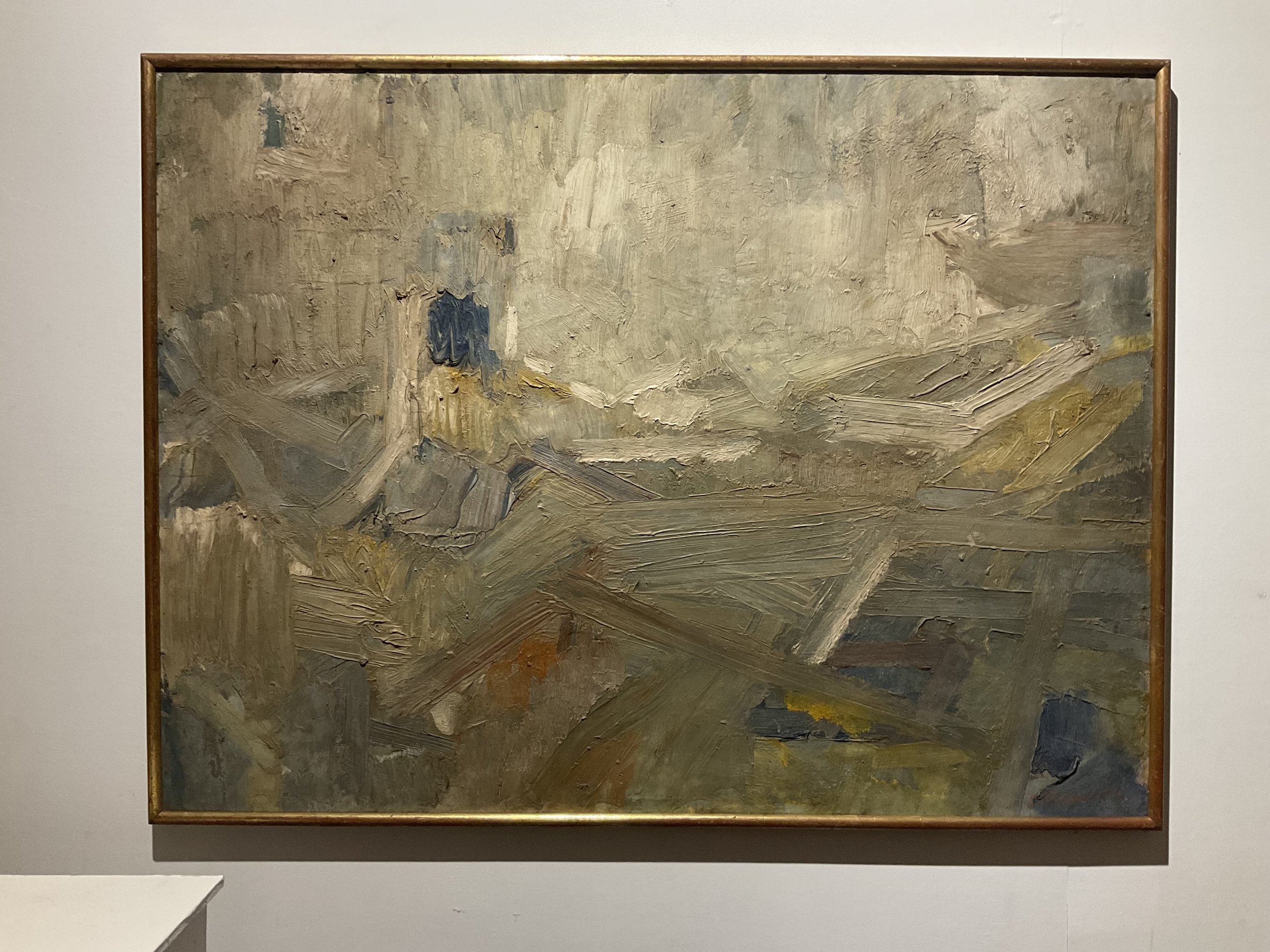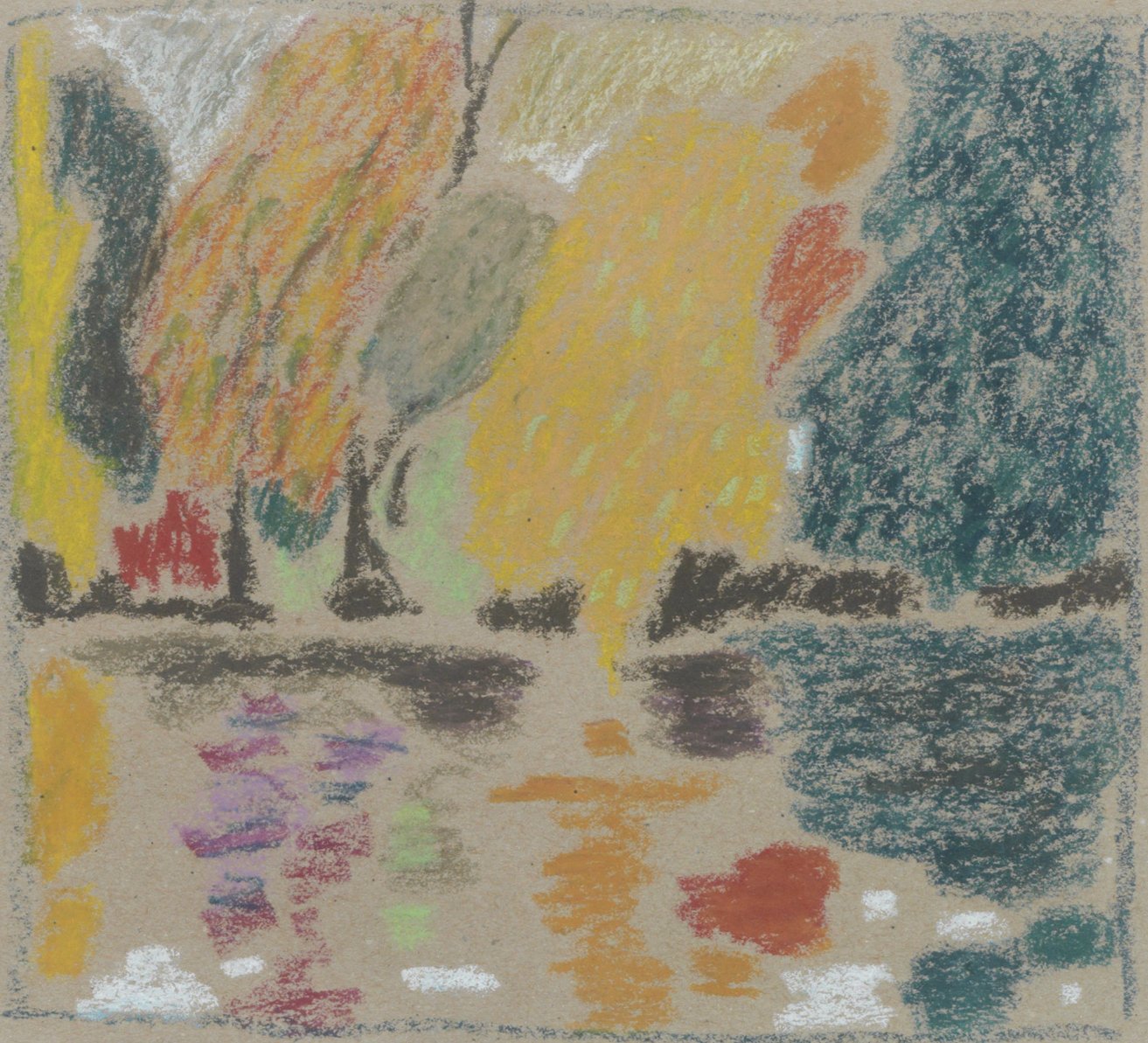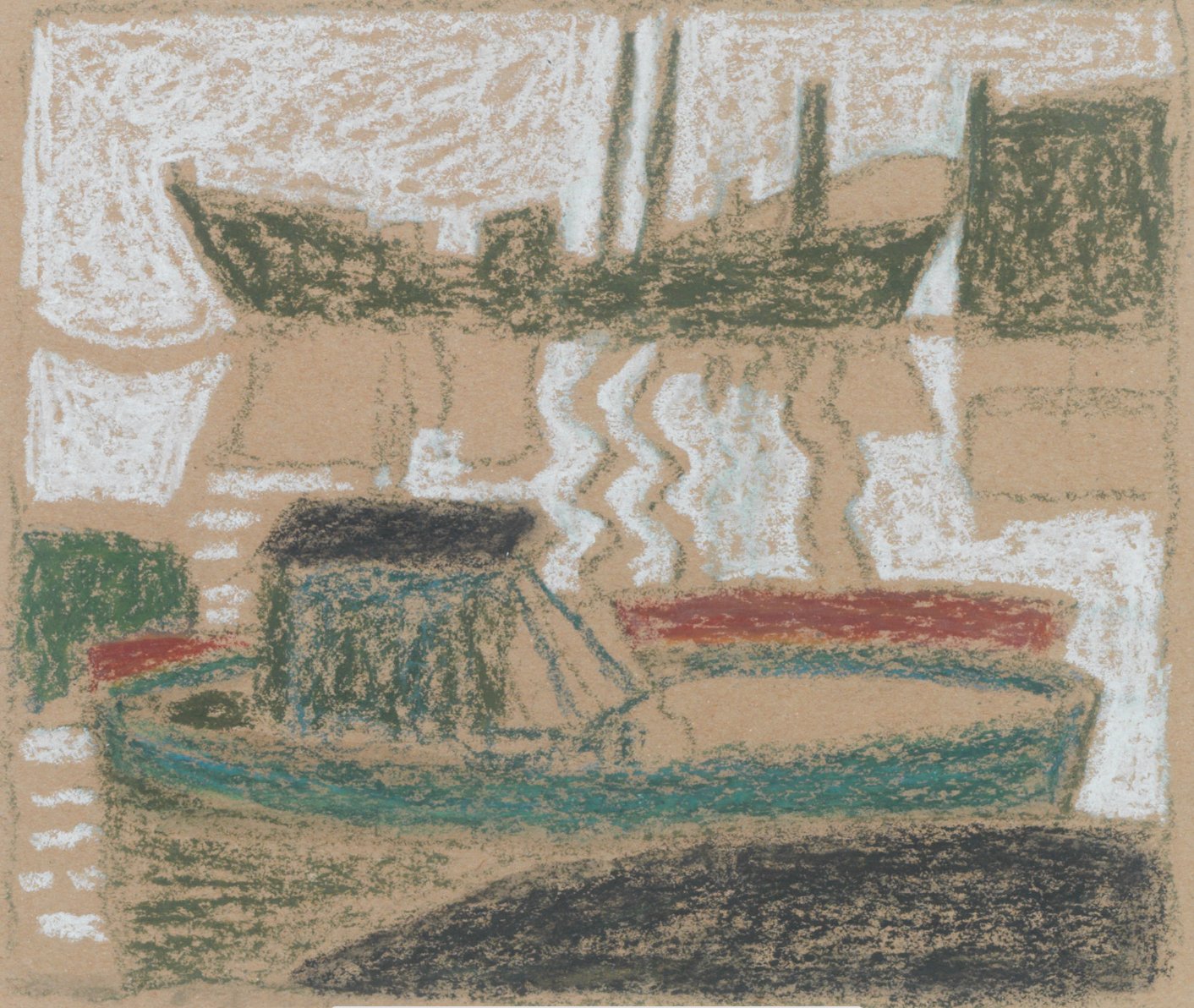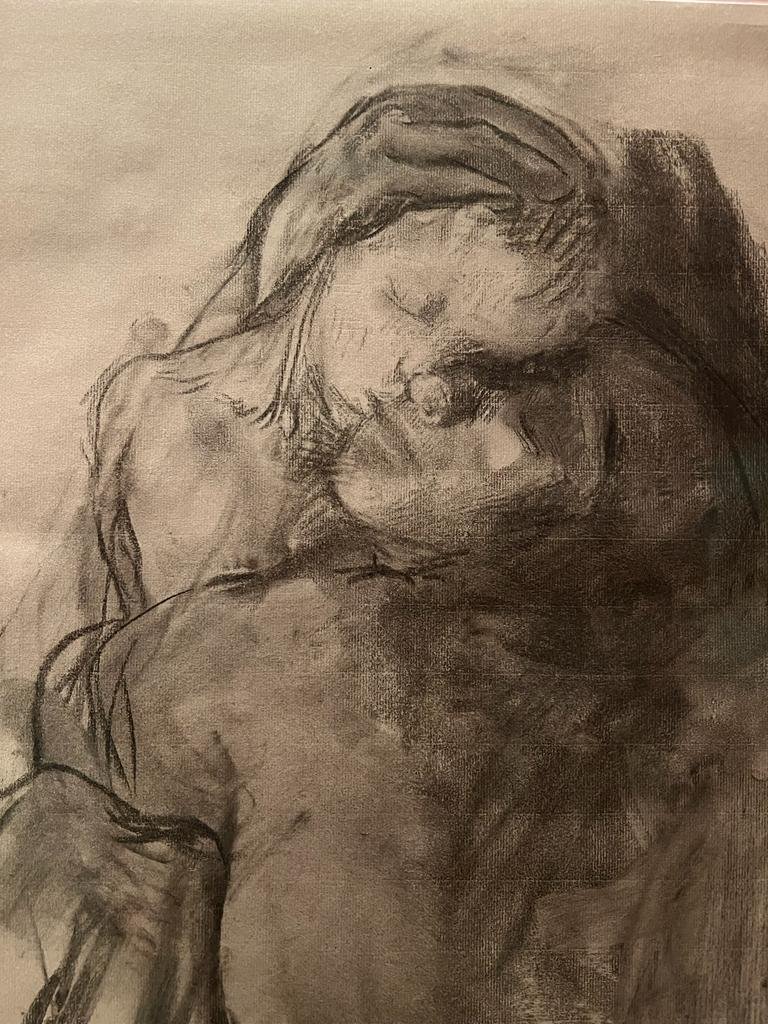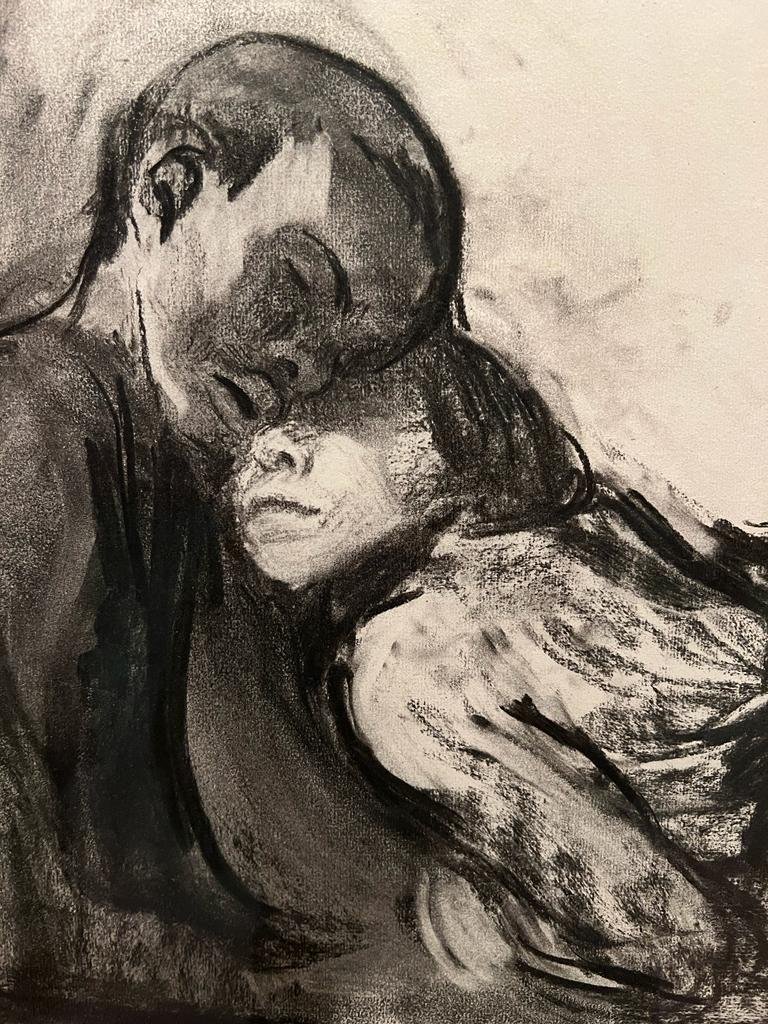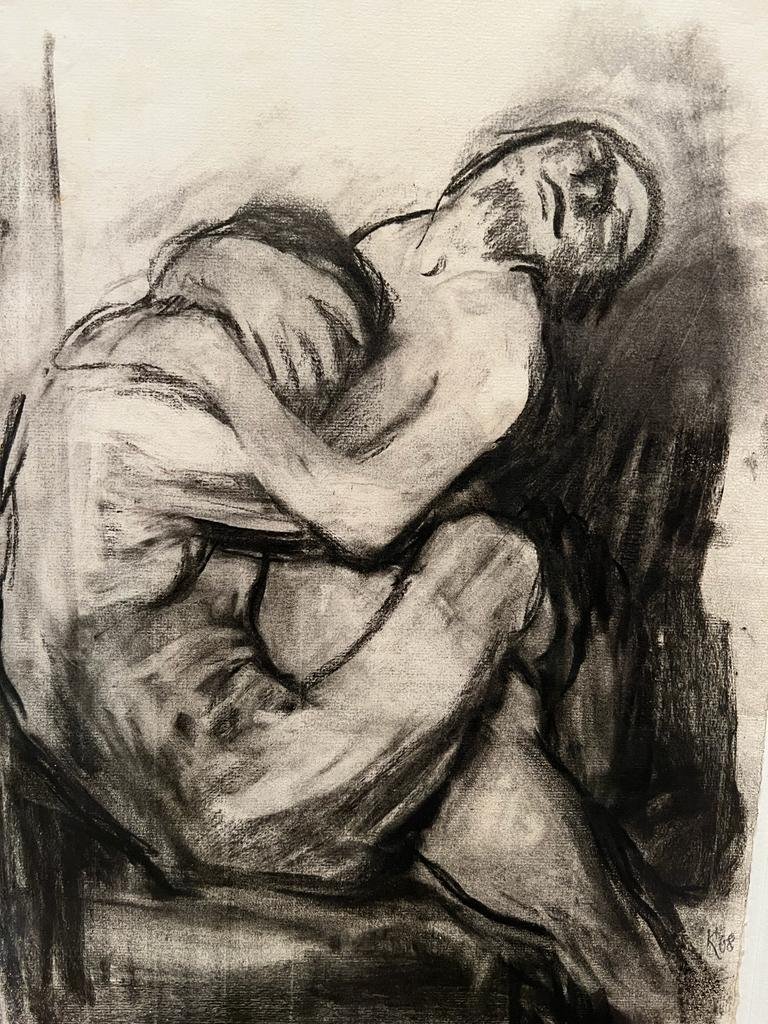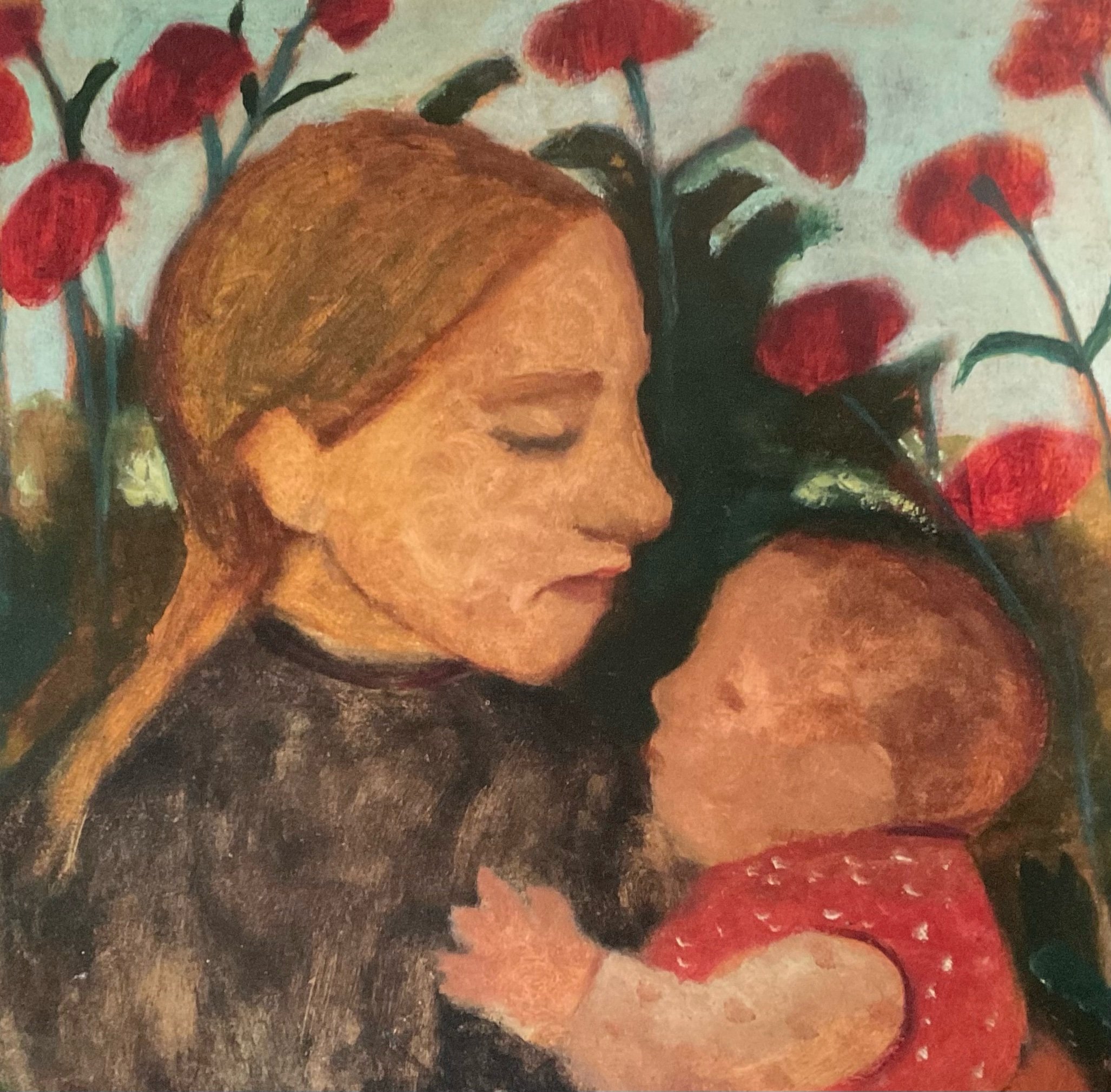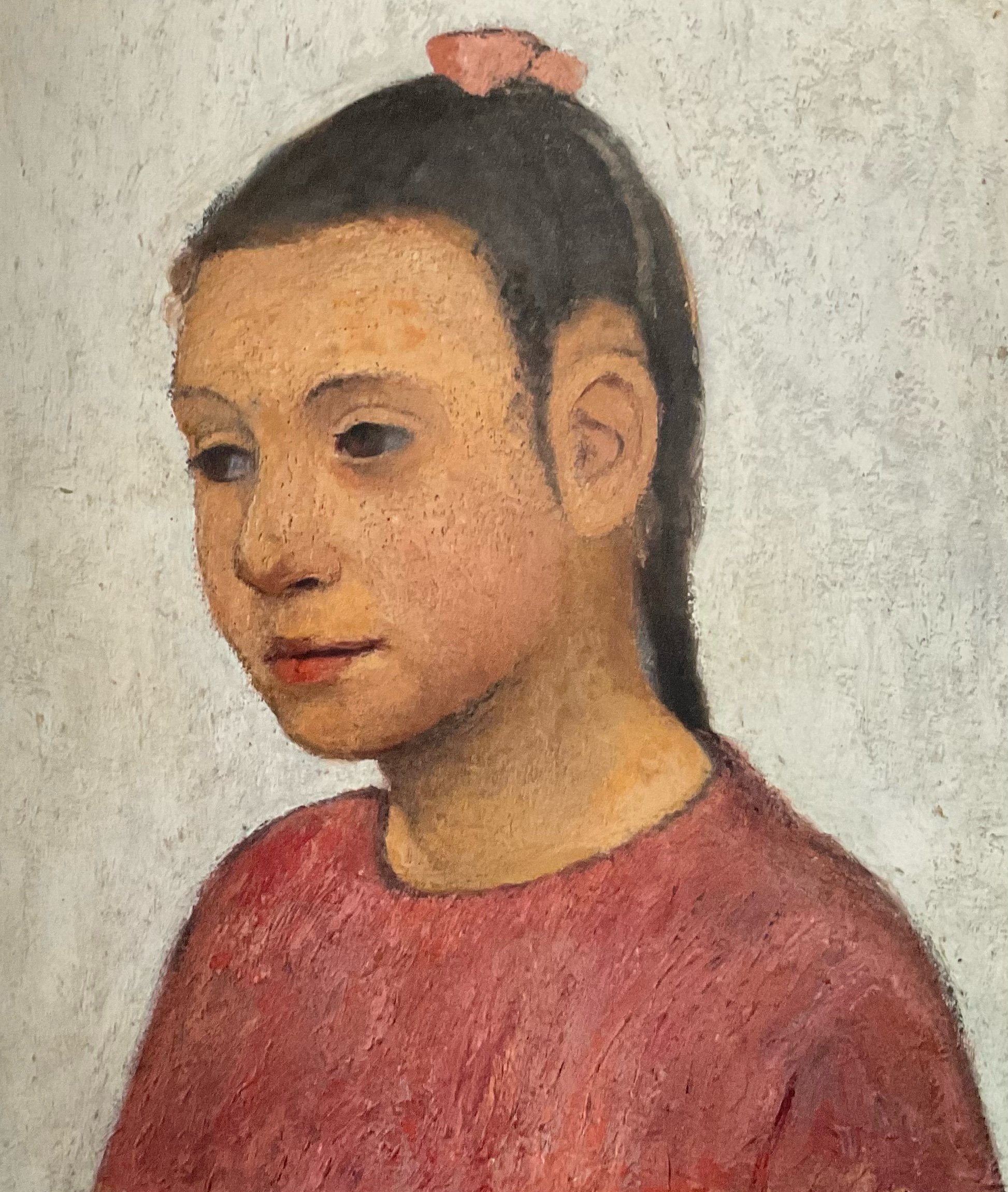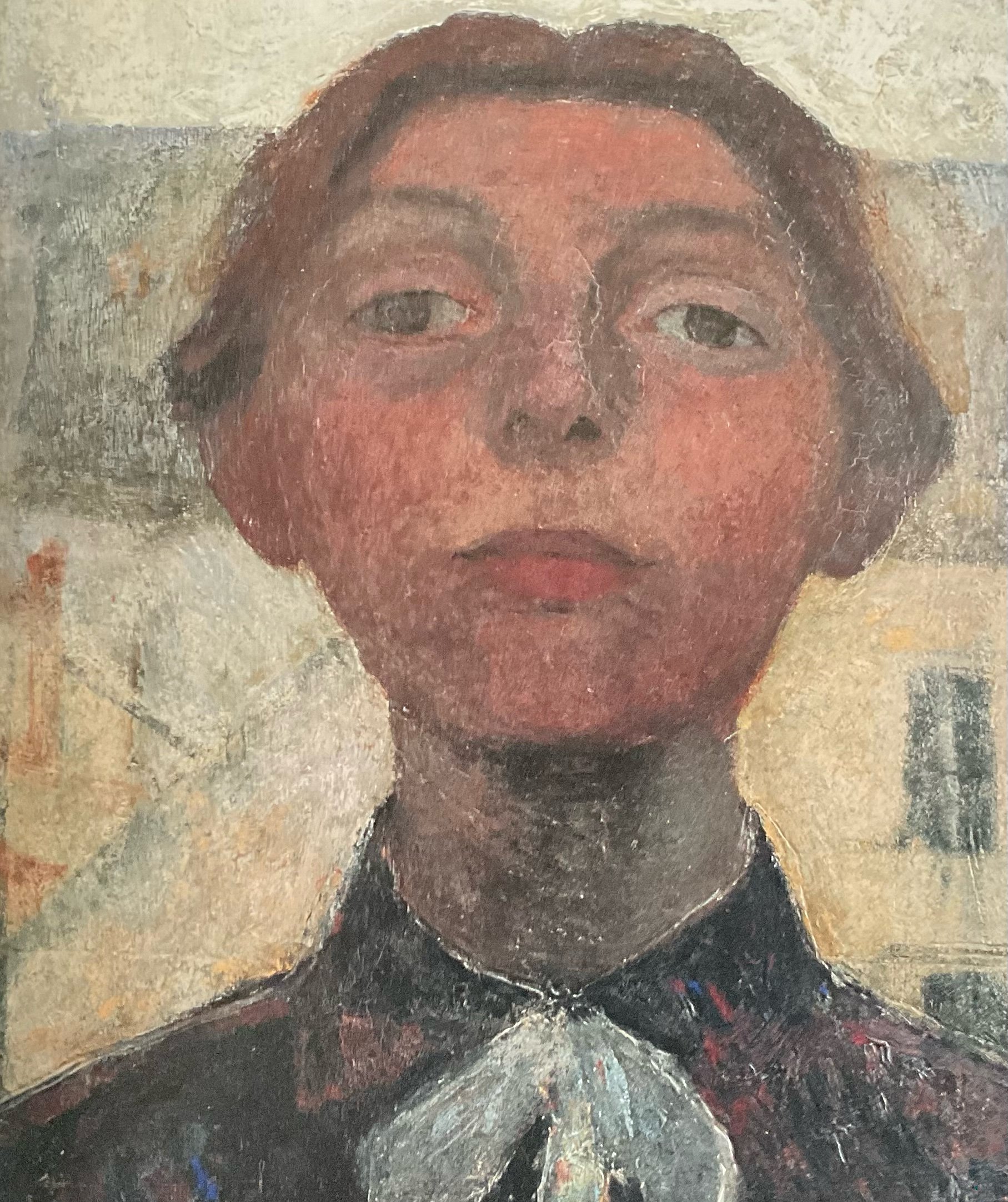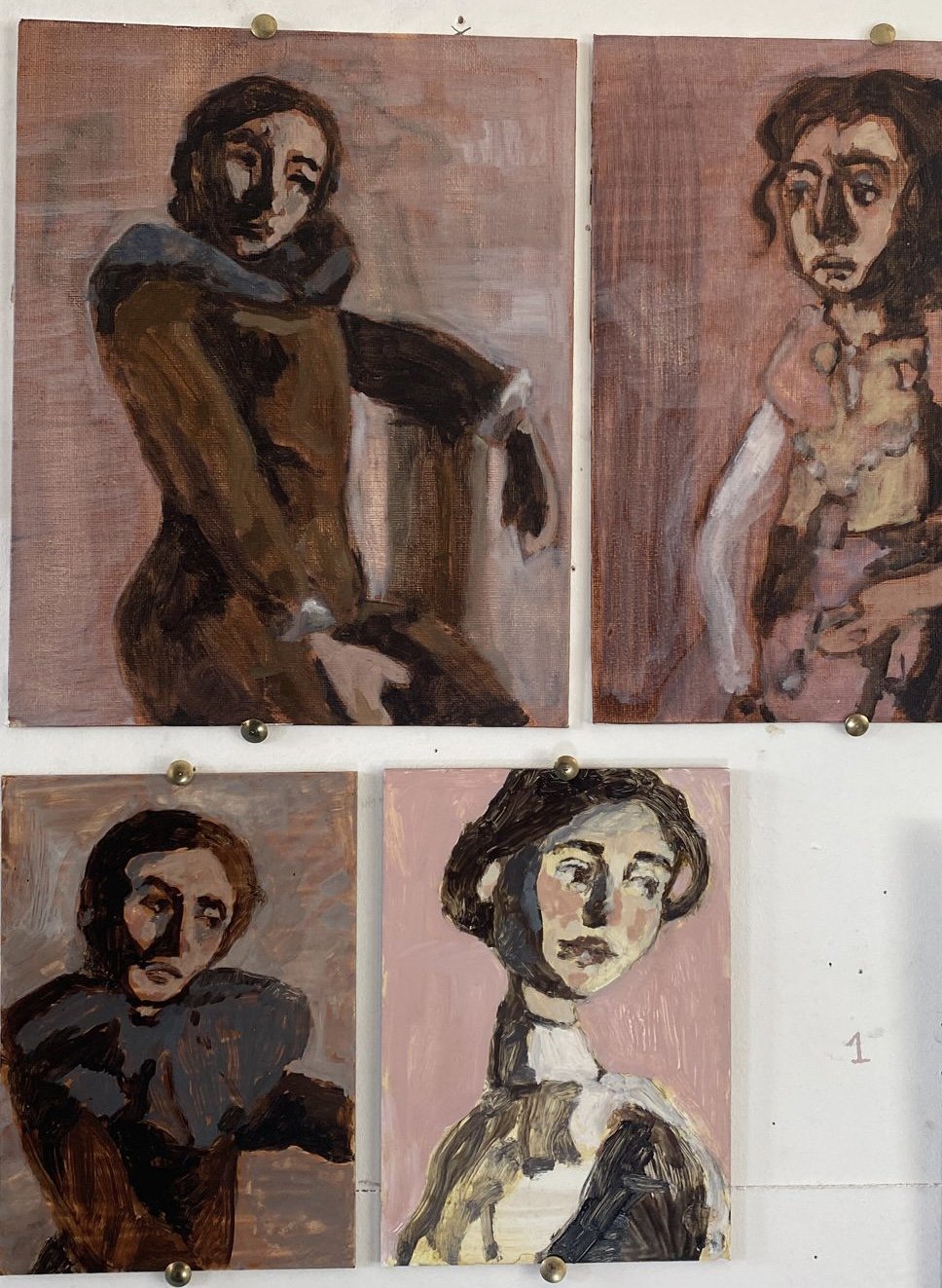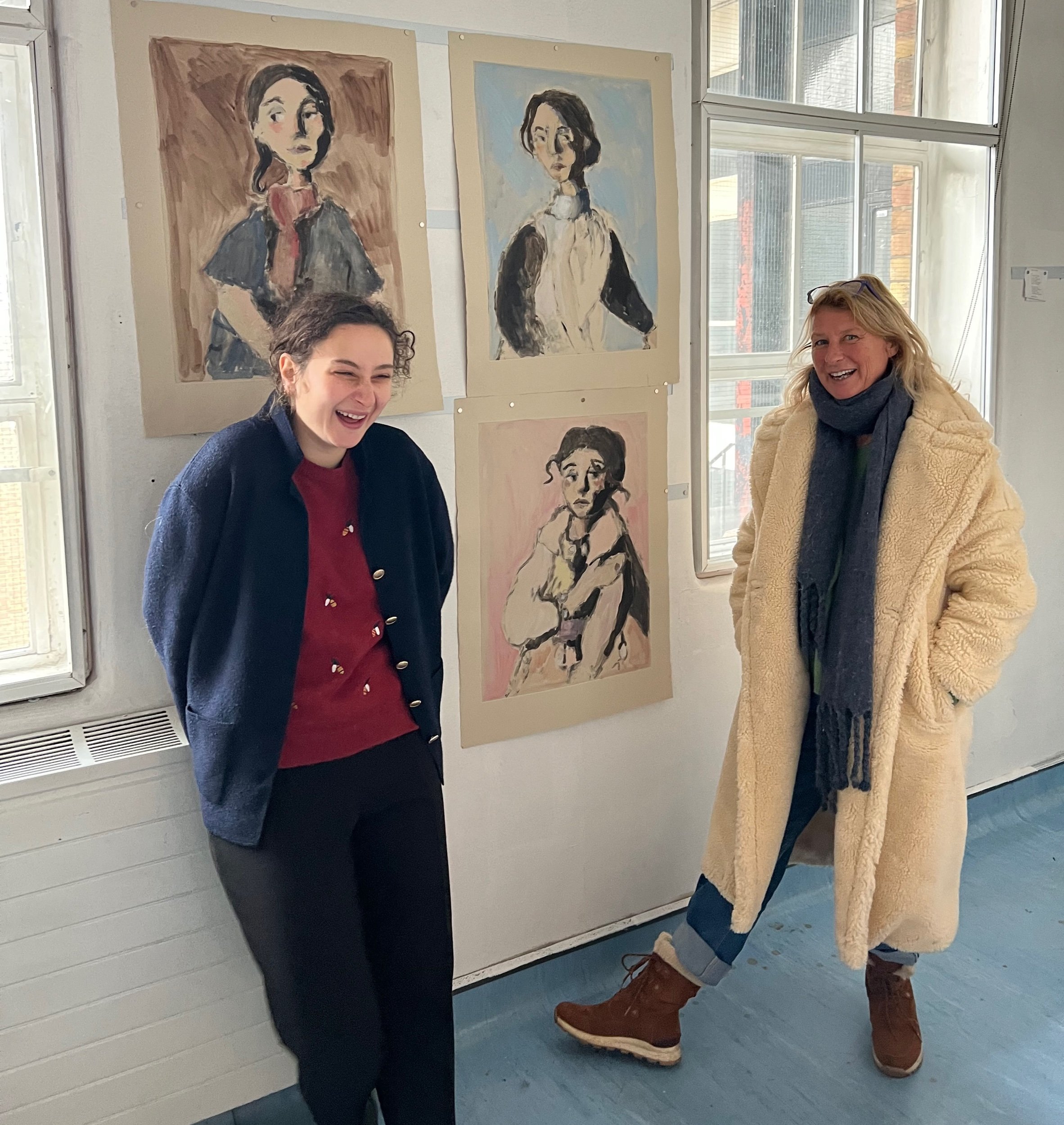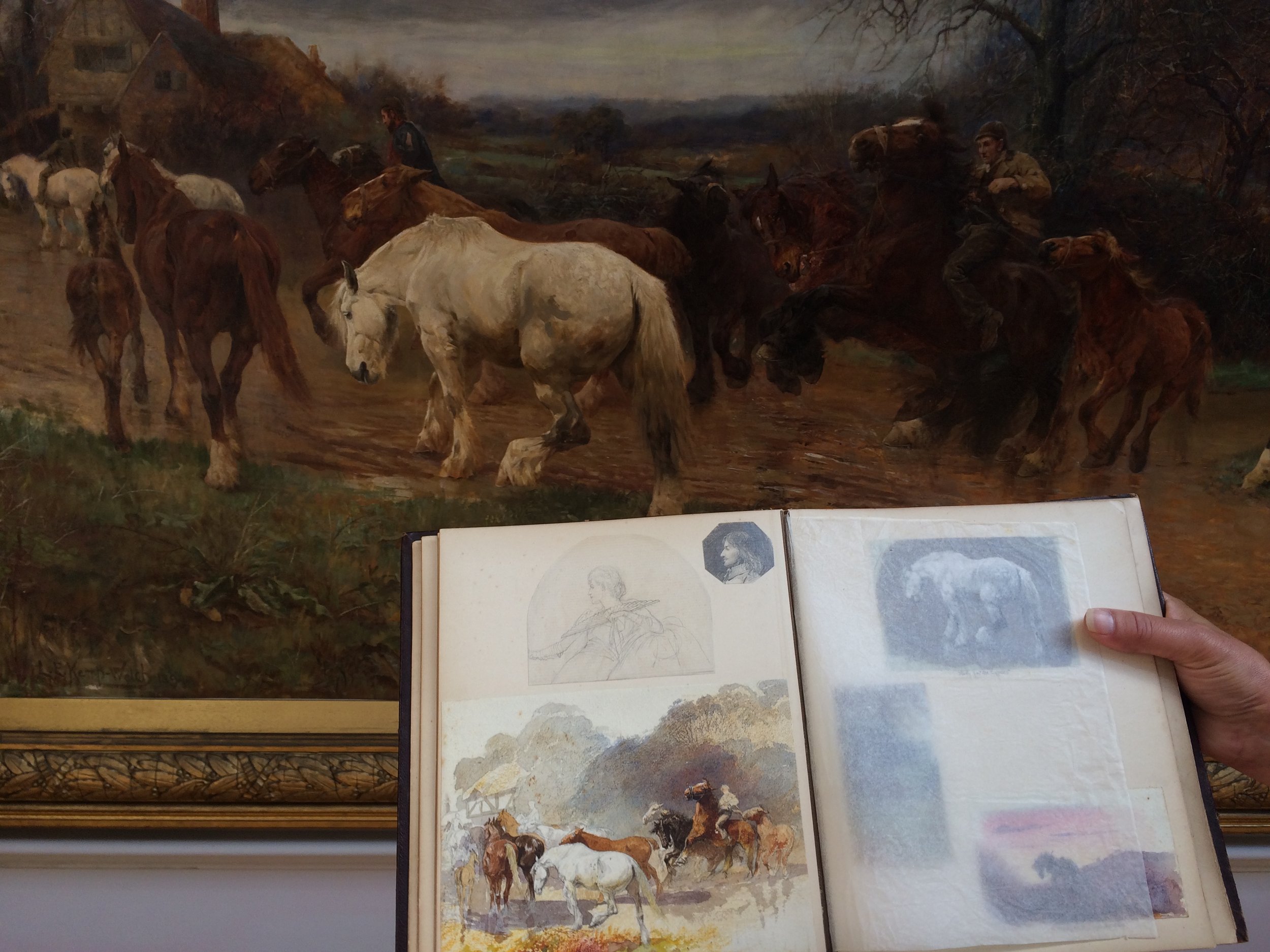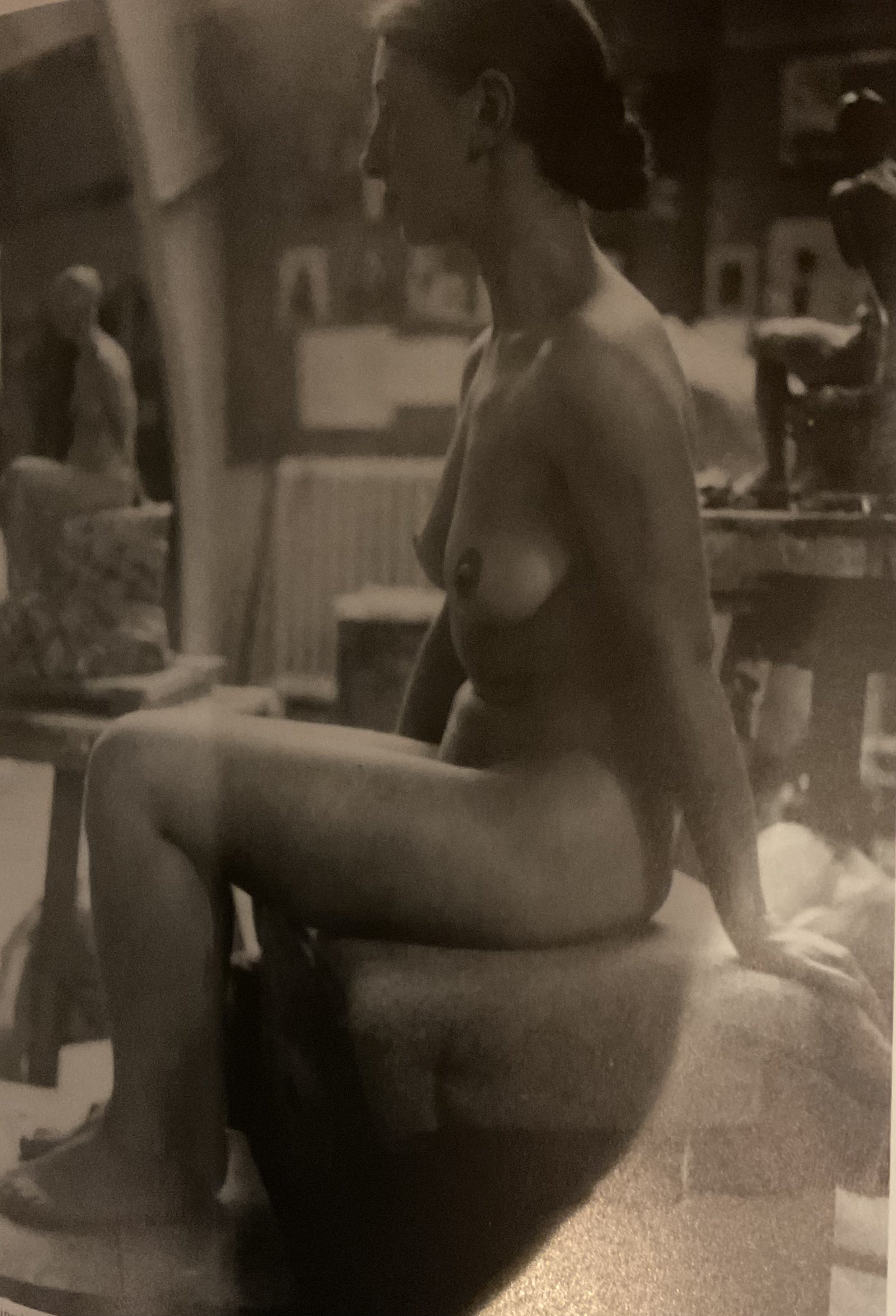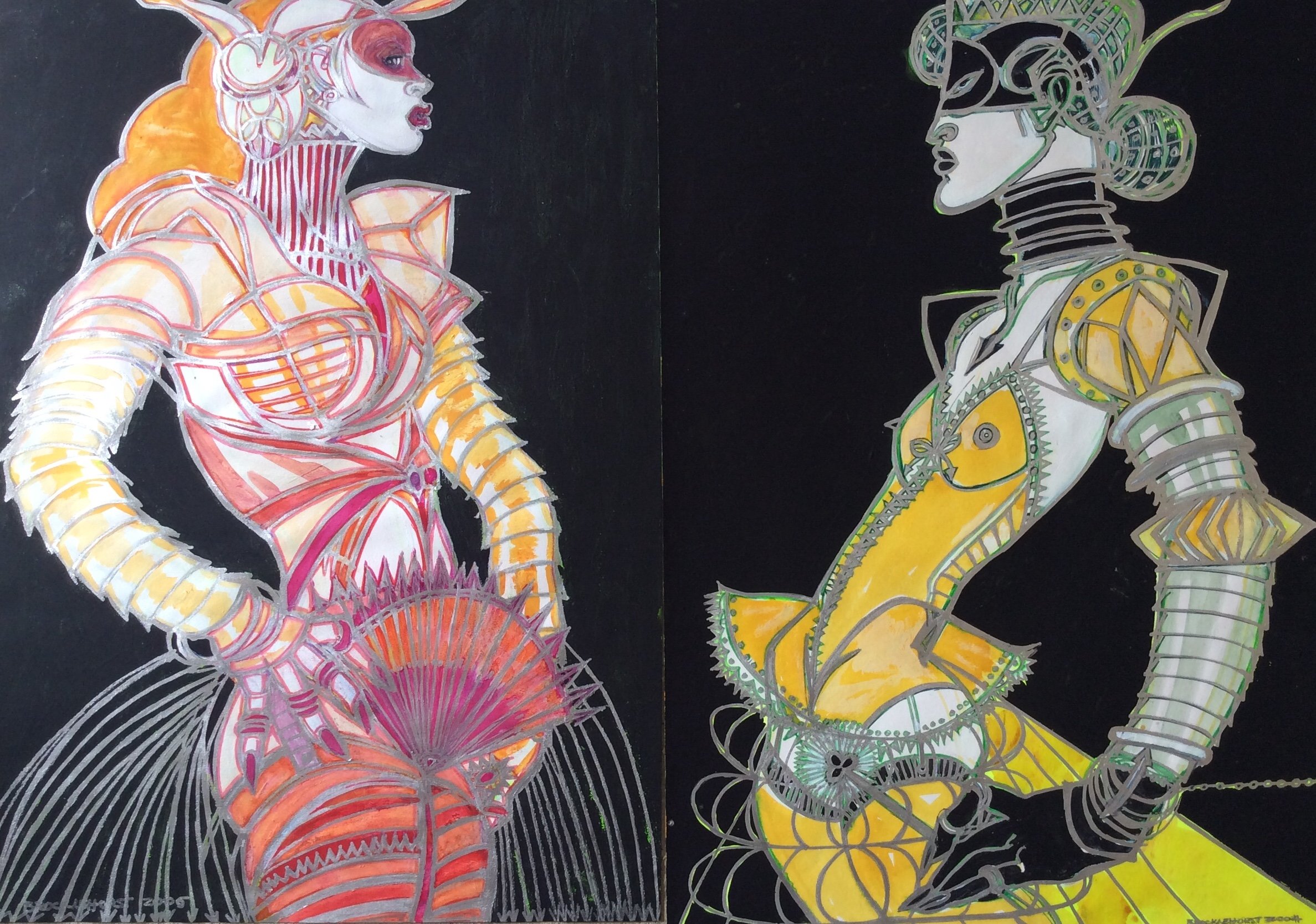William Gear was born into a mining family in Scotland , studied together with Wilhelmina Barns-Graham and Margaret Mellis at Edinburgh College of Art in the 1930’s before travelling to Paris to work with Fernand Leger . He also attended a summer school with ‘The Two Roberts’ so really was at the heart of the Modern Scottish Art movement of the pre war years .
He was called up for military service serving in the Middle and Far East where he met the artist Merlyn Evans and at the end of the war became one of ‘The Monument Men’ being signed up to the Allied Forces’ Monuments, Fine Arts and Archives (MFAA) section, during and immediately after the war. The group of approximately 400 service members and civilians worked with military forces to safeguard historic and cultural monuments from war damage, and as the conflict came to a close, to find and return works of art and other items of cultural importance that had been stolen by the Nazis or hidden for safekeeping. Some of them are portrayed and honored in the 2014 film The monuments men .
Post war Gear became heavily involved in the Cobra group and was one of just two British artists accepted into the group. Gear was invited by Constant and Jorn to exhibit at CoBrA shows in Amsterdam and Copenhagen in 1949, alongside Corneille and Appel. In the same year, he exhibited alongside Jackson Pollock at Betty Parson’s Gallery in New York. So lets be honest at this point Gear has some of the very best credentials in the Modern British and Avant Garde Art groups of the post war world.
The 1950’s
Gear moved back to the UK from Paris in 1950 . He was living with his young family in Loosley Row near Princess Risborough , Bucks and said about his work
‘There was always a link with nature, I never denied nature really. Even in those extreme abstract themes we have been looking at, there is an equivalence to, observable form.
I don’t say nature in the naturalistic sense but of observable forms. They may be telegraph poles or stakes or trees or structures or, as I am looking out the window now, I mean, I can see, I can see my painting in two or three different ways.
There is the severe architectural modern structure over there and at the same time trees and foliage and blossom and light through the tree. I mean, there is my painting you see. This is where it comes from. I don’t necessarily sit down and paint that, but I am aware of it.’
We only have to look at the titles of his works from this period to see that they are deeply rooted in nature and the seasons much like the work of Alan Reynolds from the same time. The two works pictured within this blog are companion works from 1952 and titled Summer morning ( shown above )and Summer afternoon (shown below). A close examination shows the exact same palette being used in varying proportions . The colours are vibrant but the morning work has more of a subtle subdued feel about it . Summer Afternoon sold a few years ago at Christies but Summer Morning is currently available here at Blondes Fine Art in Hertfordshire, so do get in touch if you would like to view the work.
The Festival of Britain
The festival of Britain was a national exhibition and fair that attracted millions of visitors throughout the United Kingdom in the summer of 1951. Historian Kenneth O. Morgan claimed that the Festival was a “triumphant success” during which people, “flocked to the South Bank site (in London).
As part of the event the Arts Council of Great Britain organised an exhibition, “60 Paintings for ‘51”, showing from 1st January to 1st December 1951 at the Suffolk Galleries, Suffolk Street, London W1. They invited 60 important contemporary painters to exhibit, even providing some with canvases for them to paint on as art materials were in short supply after the war. It was stipulated that paintings were to be not less than 45 x 60 inches (114 x 152 cms). It was an opportune moment for Gear who, out of sixty artists invited to submit, was one of five artists awarded a Festival of Britain Purchase Prize. Gear’s painting was a huge canvas – Autumn Landscape – and the only abstract work selected. The Arts Council purchased the five prize-winning paintings for £500 each, a considerable sum in the 1950s. The winners were Lucian Freud, William Gear, Ivon Hitchens , Robert Medley and Claude Rogers .
Only three paintings in the entire exhibition were abstracts, those by Peter Lanyon, Victor Pasmore and William Gear. Gear’s prize-winning abstract “Autumn Landscape” caused quite a furore and some of the narrow minded British press led a call for all of its readers to challenge the decision with local Members of Parliament. Gear was undeterred and continued to paint his abstract work and to challenge the traditional art world . I think that his output from this period is some of his very , very best . Innovative , bold and new . The use of vibrant colour was to show the way forward for many of the Modern British Art greats that we love to collect and appreciate today .
Gear was amongst the pioneers in Britain to produce prints using the silk screen technique. He moved to Littlebourne in Kent (1953), was elected a member of the London Group and began receiving commissions for fabric and wallpaper designs in the same way that Alan Reynolds also did with Edinburgh Weavers. Gear producing about 100 designs over the following nine years.
He was curator of the Towner Gallery in Eastbourne from 1958 to 1964, and then head of the Faculty of Fine Art at Birmingham collage of Art , a post from which he retired in 1975. It was while he was at the Towner that he managed to change the local authority’s collection policy from Victorian and local views to securing them the foundation of a major collection of post-war British art. He was still happy to ‘rock the boat’ and while in this role famously curated the first solo exhibition of Mockford's work in 1959 and also bought Mockford's 1958 painting, Eastbourne, for the gallery, a decision that caused another public outcry at the time. The painting was considered politically subversive and became the subject of a council meeting about why the gallery had paid for such a thing.
The Eastbourne painting features an aerial view of the town with line drawn houses surrounded by chalk and the Long Man, a giant emerging from the chalk, seemingly about to step on the town. Its a fabulous work and well worth viewing if you are ever in Eastbourne . It is now considered to be the star of the collection , how times change !
It really shows how our world needs people to stand up for what they truly believe and be prepared to turn a back on the well trodden path to seek a new way to walk .

